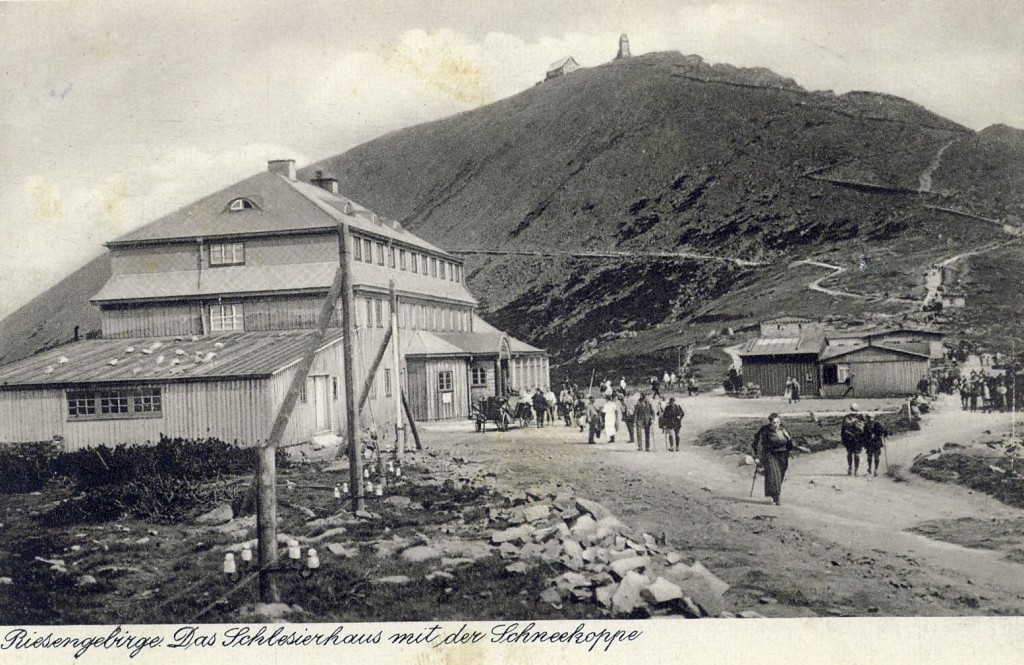 The settlement in the Karkonosze region was shaped in periods numbering hundreds, and sometimes only decades. The human wave flooded the mountains, which disappeared after a while, then flowed in again, to fade away again, leaving empty houses.
The settlement in the Karkonosze region was shaped in periods numbering hundreds, and sometimes only decades. The human wave flooded the mountains, which disappeared after a while, then flowed in again, to fade away again, leaving empty houses.
One of the most valuable monuments of folk architecture is the Karczma Książęca in Miszkowice. According to an unconfirmed tradition, it was to be built on the site of the alleged court of Prince Michael. In fact, it was not built until the 17th century. as a court inn, then it was rebuilt in the years 1624, 1664 i 1774. W 1810 r. Prussian ministers met here secretly: J. Stein (then residing in Austria) i K. A. Hardenberg.
It is here that the foundations of the superpower policy of Prussia were created in the post-Napoleonic era. On Książęca Kostka above the inn, there are remains of a monument commemorating this event.
Permanent settlement at the foot of the Karkonosze appeared relatively late, as for the mountains so already known. There are indeed transmissions, which they say, that in Miszkowice already in 1012 r. there was supposed to be a hunting lodge, erected by Michał, the prince of Trutno, but it is a legendary figure, and the city was not there yet. These areas at the beginning of the 11th century. they certainly remained a deaf forest.
The first villages at the northern foot of the Karkonosze Mountains probably appeared in the second half of the 13th century. or at the beginning of the 14th century. It was the first wave of settlement, related to the colonization of the area. Some of the settlements may have existed earlier and had a Slavic character or ancestry, some were placed on a raw root, mostly right away under German law, and their origin can be inferred from their original names, which most often derived from the name of the founder, the later mayor: Arnoldi villa (Miłków), Petirsdorf (Piechowice), Michelsdorf (Miszkowice), Gerardi villa (Podgórzyn), Hermann's villa (Sobieszów) itp.
At that time, these areas were located in the largest of the Silesian duchies: Świdnica-Jawor, constituting a part of its southern border. W 1289 r. the Czech king Wenceslaus II agreed to annex a part of the area to the Duchy of Jawor. From 1292 r. eastern part of the Giant Mountains (Lasocki Grzbiet) entered the area of a vast estate, which the prince of Świdnica, Bolko I, the Strict, gave to the Cistercians who were then settled in Krzeszów, in the place of the Benedictines. On the other hand, the proper Karkonosze were situated within the duke's estates, which doesn't mean, that there were no smaller knightly estates there.
The situation on the Czech side was similar, but there the German colonization was more important. The first villages and settlements were established mainly in the eastern part of the Karkonosze Mountains, in the area of Trutnov. Monasteries established a large part of the settlements, mainly the Benedictines of Opatovice (also known from the colonization of the vicinity of Krzeszów and Kamienna Góra). They are credited with founding Vrchlabí, and at least the local rectory before 1290 r. W 1301 r. Upe was replaced, and soon Dolni Branne, March, Lysećiny, Lanov, Horni Stare Mesto i inne. Settlement developed particularly intensively in Rychory and at its foothills, where gold was mined. The ore mining development on the Czech side reached its peak in the 15th and 16th centuries. and then practically all settlements already existed, even deep in the mountains, as Svoboda nad Upou, St. Peter, Black Dul, Rokytnice nad Jizerou, Benecko and many others.
At the end of the 13th century. it was mentioned in the Miszkowice documents (1289 r.); in the document of the Wrocław chapter of 1305 r. many more villages emerged: Kowary, Ściegny, Miłków, Piechowice, and then Sosnówka, Podgórzyn (1318 r.) and Sobieszów (1327 r.). This does not mean, of course, that these villages only then arose, on the contrary, Placing them in the document concerning the parish network that is just being created indicates, that they must already exist and belong to the larger ones in the area. It can therefore be assumed, that in the first stage of the formation of the settlement network on the outskirts of the Silesian part of the Karkonosze there were approx 8-10 wsi, but none of them actually lay within their territory yet.
After the death of the last of the Świdnica Piasts, Prince Bolek II the Little (1368 r.), his principality was ruled by a widow for life, Duchess Agnes (1392 r.), but already as a fief of the kingdom of Bohemia, brought in dowry, under an earlier succession agreement, by the niece of Bolek II when he married Emperor Charles IV. Thus, the Giant Mountains, at least theoretically, have lost their border function.